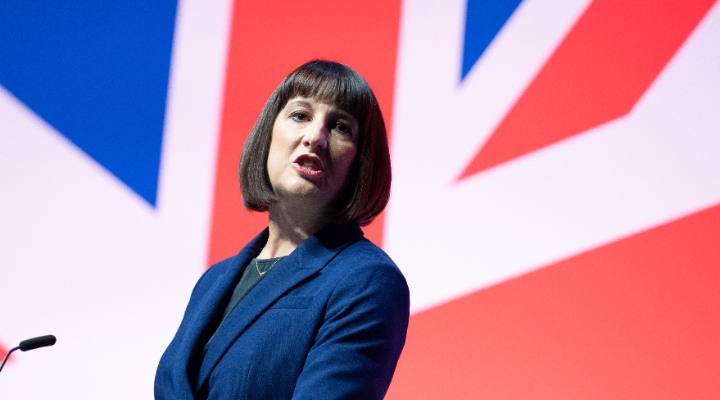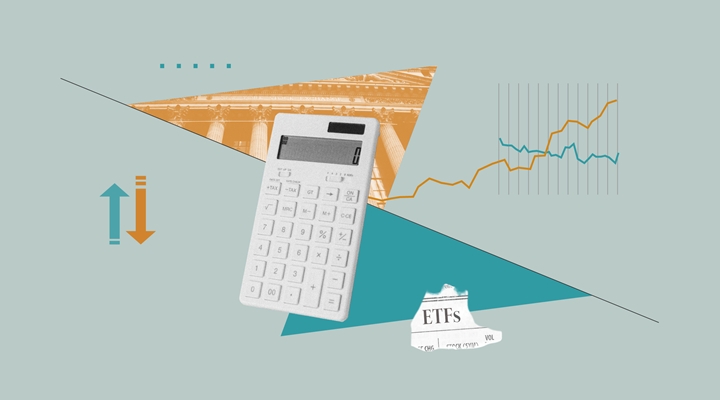Along with low fees, transparency, and intraday liquidity, one of the greatest features of ETFs is instant diversification. While there are exchange-traded products which give exposure to only one specific asset (for instance, gold funds or currencies), the majority of equity and fixed-income ETFs track the performance of indices with numerous holdings, such as the EURO STOXX 50 or iBOXX Euro Liquid Corporates. Because of this diversification, investors can pick up a broad asset allocation for their portfolio with only a handful of ETFs. However, blindly picking a handful of broad indices can lead to unintended concentration, either within a particular ETF which may be surprisingly concentrated, or across your portfolio as different ETFs hold overlapping securities.
The benefits of diversification were first highlighted by Harry Markowitz in the 1950's in his paper and subsequent book, 'Portfolio Selection' (for which he was later awarded a Nobel Prize). The basic idea is that an investor can maximise a portfolio's rate of return for a given level of risk (or vice-versa, minimise its level of risk for a given rate of return) by including more securities in the portfolio. Once a portfolio cannot increase expected returns without increasing risk (or reduce risk without reducing expected returns) by adding more securities, it has reached what is known as the efficient frontier. The key is that the different securities must have less than perfect correlation, so that when one security does particularly poorly, others will be doing well simply by chance, thereby reducing overall volatility.
The same principle applies one level higher, diversifying across asset classes as well as across securities. Most portfolios should include both stocks and bond (as well as potentially other asset classes like commodities, real estate and/or hedge funds), despite the greater long-term expected returns of equities as compared to fixed income. Not only are government bonds and stocks less-than-perfectly correlated, but with a proper rebalancing process, you will be taking a little off the top of a market that's reached its peak and moved it into another asset that should perform better in the future.
However, rebalancing and asset allocation all assume that the building blocks of your portfolio are internally diverse funds with little overlap. Not all indices are designed with Markowitz's efficient frontier in mind, and in many cases, the particular market the index is trying to track may not be all that diversified to begin with. For example, while Brazil is a large country, it's still an emerging market, and its equity market is heavily tilted towards oil and gas and miners, companies which export the majority of their products. The MSCI Brazil index is dominated by two mega-capitalisation multinationals, Vale and Petrobras, with a combined one-third weighting.
While this is generally more of an issue in indices that track smaller markets, similar problems can arise closer to home. Concentrations in certain sectors in some indices may actually give you less diversification than you would expect. For example, the MSCI Spain index has more than 55% of its weighting in financials, while the corresponding figure for the MSCI Italy index is 45%.
In these cases, one solution offered by ETF providers is tracking indices where there is a maximum limit on the exposure to any one security. These capped ETFs offer greater diversity, but they can skew the index more towards mid- and small-capitalisation companies. They are prevalent amongst the single-country emerging markets funds, including China, Russia, and Mexico. The precise rules of capped indices vary, but they often restrict the single largest holding to 10% or 25% of the portfolio with a secondary cap on the combined size of the five or ten largest holdings.
Finally, even a portfolio that includes multiple different ETFs can have overlapping exposure to a particular security or sector. For instance, prior to the Deepwater Horizon explosion earlier this year, if you owned a FTSE 100 or FTSE 350 fund, a European or UK dividend fund, and an oil and gas fund, you’d have exposure to BP in all of them. This is a great example of the need to look through portfolios for true diversification of the underlying holdings, as a portfolio that included those three ETFs would have been hard hit by the Macondo oil spill's financial ramifications.
A simple way to check your portfolio for this hidden concentration is to use Morningstar's Portfolio X-Ray tool. Once you enter the names of each fund or individual security in your portfolio, the tool will add up duplicate exposures to individual securities, making hidden concentrations apparent. It will also break down the portfolio by asset allocation: stocks, bonds, cash and other. Within equities, the x-ray will further break the portfolio down by regional geographies, sector concentrations, market capitalisations, and by style (value, blend, and growth). The x-ray also calculates the overall ratio for three valuation metrics; price-to-earnings, price-to-cash flow and price-to-book value. Within the fixed income part of the portfolio, the x-ray tool will reveal the percentages in three categories of interest rate sensitivity and credit quality (high, medium, and low), as well as the effective maturity and the modified duration. Not only can you use the tool to analyse your current portfolio, but you can test how additions (or subtractions) will impact your portfolio.
























